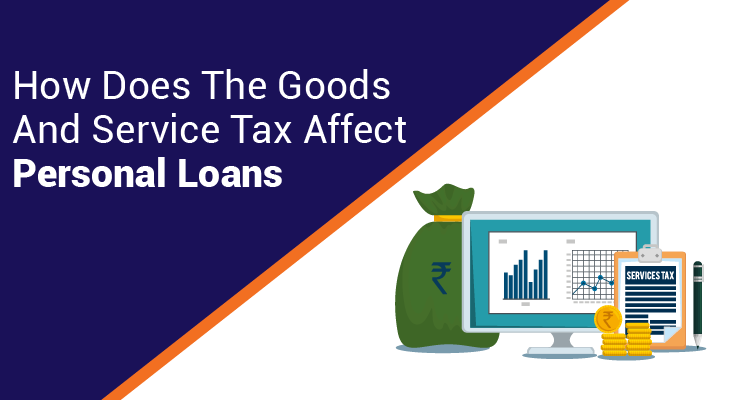The Items and Providers Tax Act got here into impact in India in July 2017 after greater than 15 years of debate, debate, deliberation and negotiation, amidst a lot uncertainty and confusion. The tax aimed to interchange India’s advanced taxation system with a one-nation, one-tax strategy. Whereas some sectors benefited from the brand new taxation system as a result of they now might get pleasure from decrease taxes, some sectors have been adversely affected.
One sector that was adversely affected by the implementation of GST was the service sector which included banks, resorts and eating places, and tourism operators. This in flip affected the individuals who used these companies – you and me. On this article we focus on the affect of GST on private loans and the way it affected people taking private loans from registered banks and Non-Banking Monetary Establishments (NBFCs).
To make clear, a private mortgage is an unsecured mortgage taken with out the lender stipulating the aim for which it may be used. A borrower can use this mortgage for quite a lot of functions. This can be emergency medical bills, bridal ceremony associated bills, home renovations and even for the acquisition of a cell phone. Whereas this can be a very enticing function of the private mortgage scheme provided by banks, rates of interest might be quite excessive.
What’s vital to notice is that there isn’t a private mortgage GST fee or GST on loans per se. Nevertheless, GST is levied on the companies prices hooked up to processing the private mortgage and reimbursement. Whereas beneath the tax regime in drive previous to the implementation of GST, the tax on service prices was 15%, beneath the GST regime this elevated to 18%.
To grasp the affect of GST on loans labeled as private loans, one wants to grasp the completely different prices and costs that one has to pay whereas acquiring a private mortgage.
Zaroorat aapki. Private Mortgage Humara
Apply Now
Processing Prices:
This normally varies from 0.5% to 2.5% of the mortgage quantity, relying on the lender in query. Thus, in case you took a mortgage of ₹500,000/-, the Processing Prices can be ₹12,500/- if the lender charged a fee of two.5%. By way of relevant GST on the mortgage, the quantity can be ₹2250. This could have been ₹1875/- beneath the earlier tax regime. For the private mortgage borrower, this might work out to be a distinction of ₹375/-. Nevertheless, if the private mortgage quantity was ₹40,00,000/-, this distinction would work out to be a neat ₹3000/-.
Verification Prices:
Some banks and NBFCs additionally cost the borrower a Verification Cost. The job of verifying the credentials of the borrower and his/her credit score worthiness is normally typically outsourced to a 3rd celebration. This cost would additionally entice GST as a service rendered.
Delayed Installment Fee Prices:
One other cost affected by the elevated fee of taxation beneath GST is the penalty paid on any delayed installment cost. This varies from establishment to establishment. For e.g., in case your EMI quantity was ₹25,000/- and the penalty imposed by the financial institution was 4% per 30 days, then in case you delayed the cost by a month, the extra tax you would need to pay can be ₹30/-
Different Prices Impacted By GST:
Aside from the above, different service prices levied by lenders on private loans included untimely closure prices. That is normally 2% to 4% of the foreclosures quantity. A GST cost of 18% would then be relevant on the service cost paid to the lender.
Thus whereas the implementation of GST has not affected the EMI or equated month-to-month installments paid towards private loans taken, it has elevated the quantity of tax paid on service prices levied by lenders by 3%. The precise distinction in actual phrases will range on the quantum of mortgage and the service prices of the person lender.
